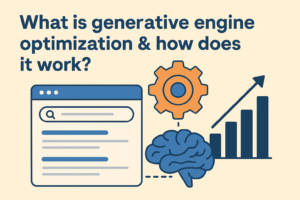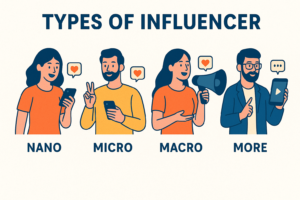If you want to survive and sustain in the dynamic and competitive digital landscape, you will need to have an online presence for which you will need an interactive website. This will result in higher user engagement, which will, in turn, help in increasing the possibility of converting them into potential customers. Creating an interactive website has become a crucial component in today’s digital landscape.
Table of Contents
ToggleThis means that your website must offer a higher UX or User Experience. It is only then that the users will come back for more. For your information, about 90% of consumers will not visit a website that is less interactive or offers poor UX.
In this blog, we will learn some of the best practices for creating a visually appealing and interactive website.
The best practices for creating an interactive website design
Offer Seamless Navigation
You must ensure that the interface of the website is not only intuitive or self-explanatory but also allows seamless navigation. Depending on the type of website there are many types of navigation like horizontal navigation which is the most common type of navigation placed in the website header section suitable for any type of website, drop-down menu suitable for dynamic websites like e-commerce where there are many categories and sub-categories and Hamburger navigation suitable for mobile screens.
Mobile Responsiveness
In today’s digital world, there is nothing that we can’t do on our mobile phones. According to research, it is observed that in India more than 74% of the website traffic comes from mobile users. So it is clear that we can’t ignore the mobile optimisation of the website. Considering the changing preferences of the people Google too has made an algorithm update in 2015. Make sure to optimise the website with different mobile operating systems like Android or IOS.
Incorporate Relevant Visuals for Interactive Website Design
Websites with engaging videos or visuals perform well today. Their success rate is quite high, creating about 83% of opportunities. Make sure that the video or the images are relevant and engaging.
Ideally, when you use such visuals, it will make the interface of your website most interactive and immersive. So, make the best use of the multimedia and graphics elements but ensure that all of them align with the website’s overall aesthetics.
Focus on Personalizing User Experience
You must personalize the user experience by incorporating specific elements in your website content that resonate with the users’ preferences.
For this, you will need to gather and analyze a lot of data to understand the users’ preferences and leverage it to personalize and create your website, resulting in higher user interactions and engagements.
Use Useful & Key Elements
When you design your website, make sure that you skip all unnecessary elements and incorporate the useful ones. This will not only enhance the user experience but will also make the website faster. Users prefer websites that load faster. So, this will also help in enhancing your SEO and SERP ranking.
Also, make sure that you use elements that will help in interaction. A few common interactive elements are sliders, quizzes, and others that call for audience participation. Do not forget to include a clear and compelling Call to Action in your website design.
Prioritize Accessibility
A website that is easily accessible is more successful. For this, you will need to follow the SEO best practices.
In addition, you will be better off if you focus on incorporating interactive elements into your website design that will offer easy accessibility to the website, even for users with specific disabilities.
To enhance and ensure inclusivity, make sure you follow the WCAG guidelines.
Make it Secure
Security of the website is an important aspect that affects both the website’s rank and the footfall. So, focus on a secure browser and valid SSL certifications, and incorporate all protocols to ensure consumer data safety and privacy.
Few Other Tips
- Keep some time for your content strategies. Depending on your website, interactive content and relevant content are bait to grab readers’ attention.
- Have social sharing buttons so the content and website are shared with the world.
- Write blog posts regularly to keep the readers engaged.
- Try to reduce the bounce rate by scrutinizing the interactive elements, navigation menus, and visual effects.
- Your website should have a responsive design for an engaging experience for the readers both on desktop and mobile.
Conclusion
In conclusion, you must follow the best practices to create an interactive website development. It is essential because it will help you keep up with the ever-changing landscape and website responsive design requirements.
The responsive design of your website will determine its functionality and intuitiveness. Most importantly, it must be user-friendly. To ensure that, you must focus beyond the aesthetics of the website.
You must be innovative, consider user feedback, and ensure that the web design reflects your brand most dynamically. This will ensure the success of your website with a higher conversion rate.








